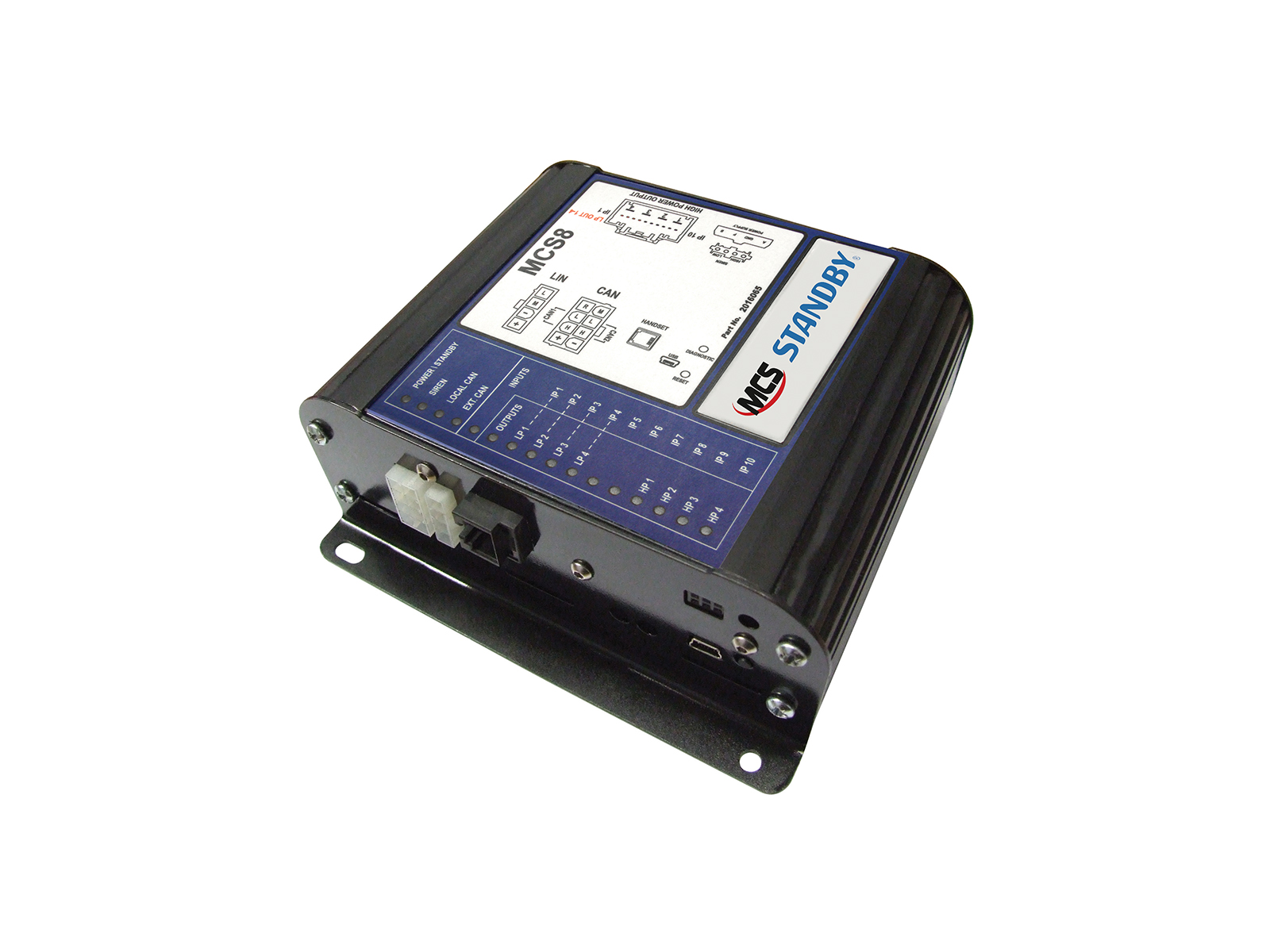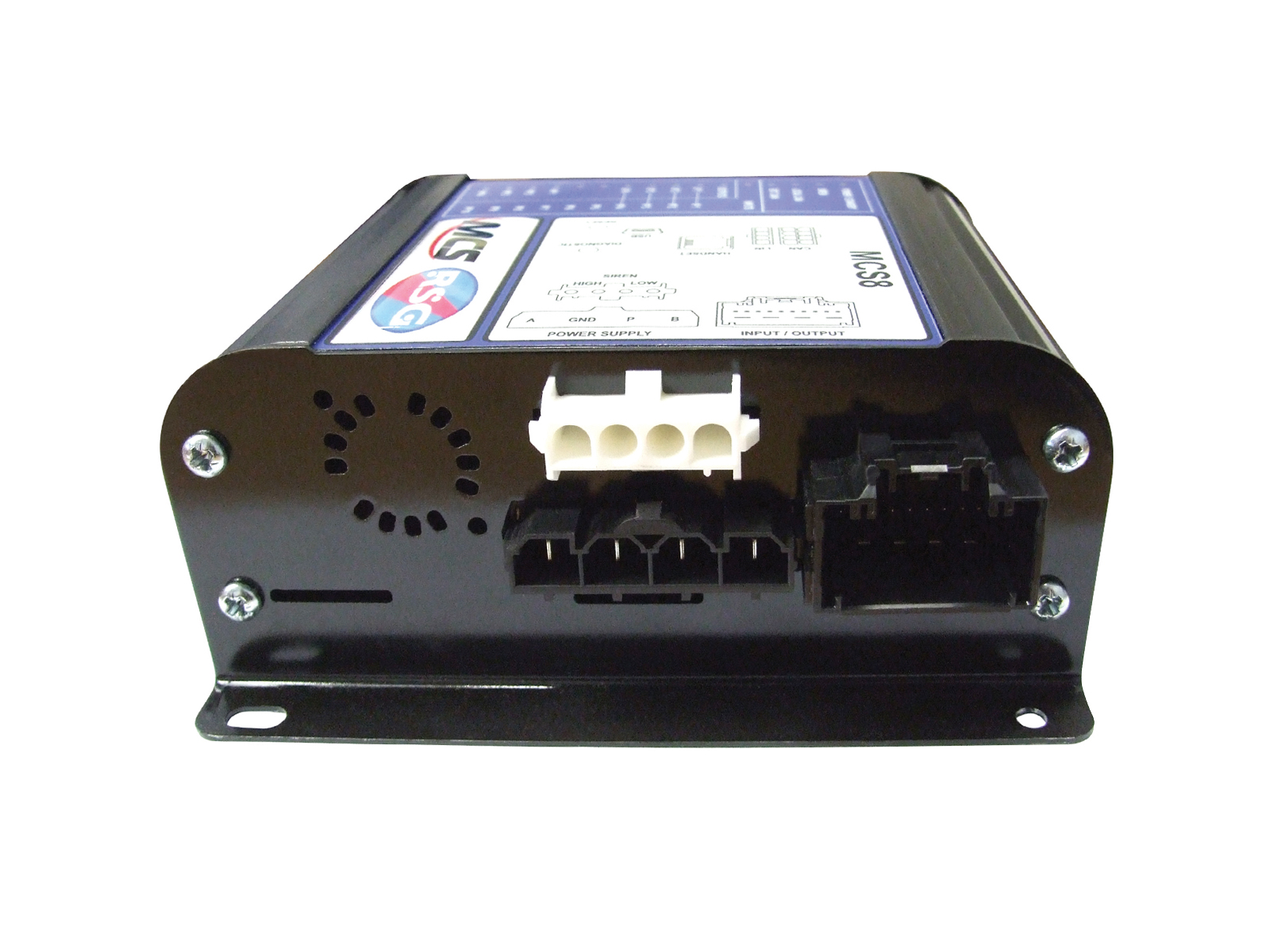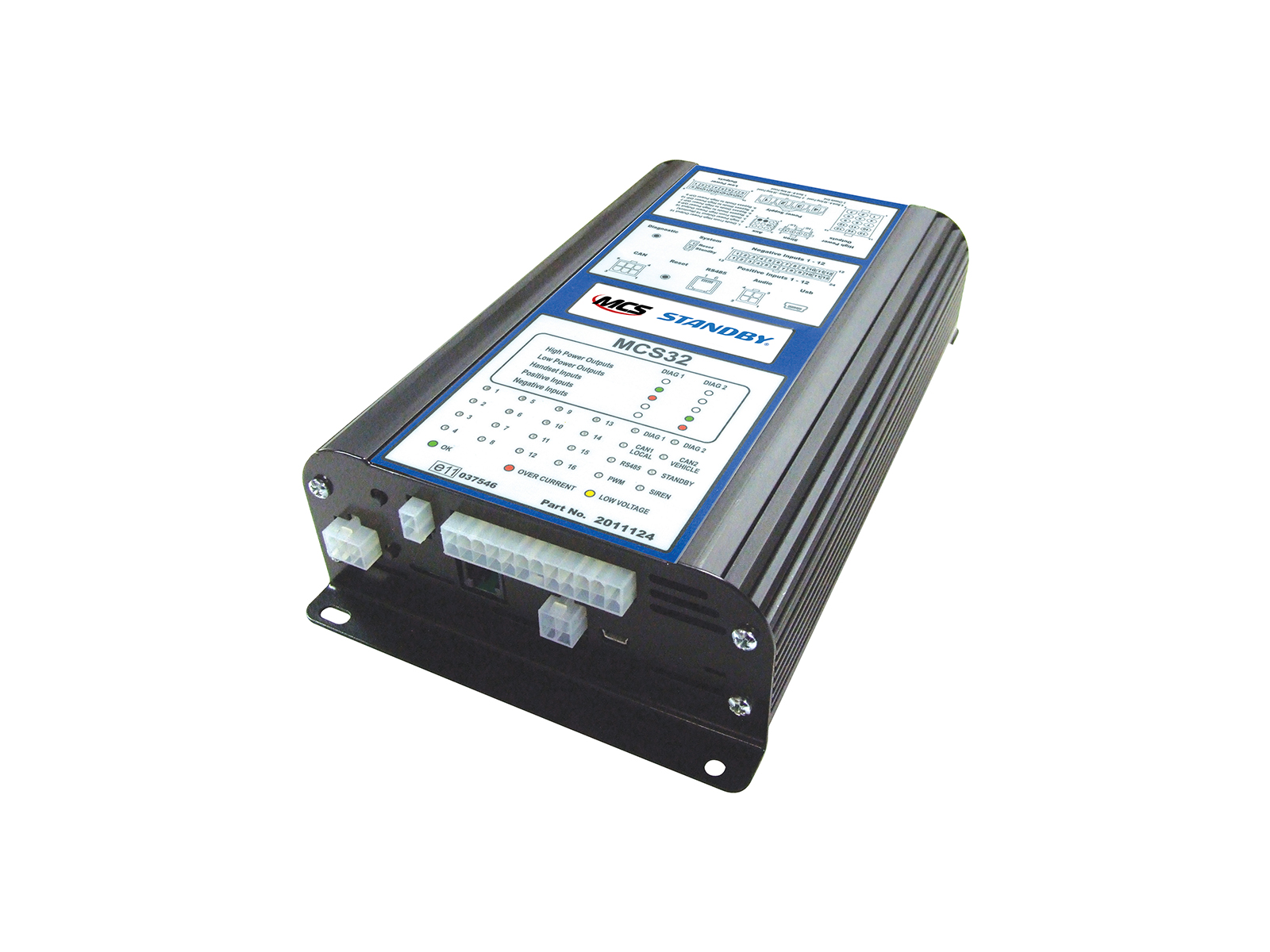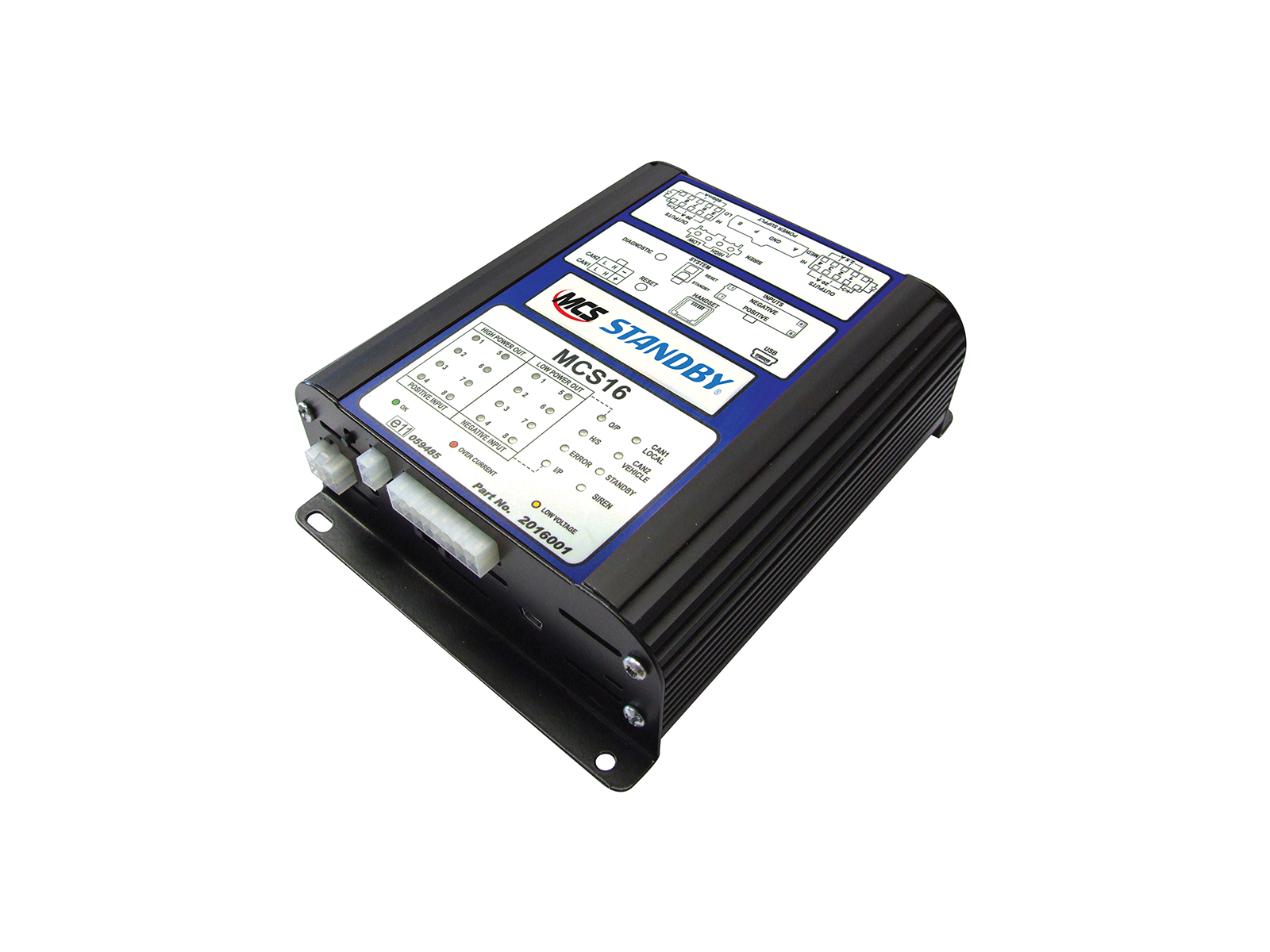Requires ACC-369 24V Power Filter for use with 24V applications.
The MCS-8 Universal Controller consists of a main control box which contains everything required to control a vehicle mounted hazard warning system, typically comprising rooftop lighting, secondary hazard warning lights and audio equipment. It has 4 high power outputs, 4 dual purpose inputs and medium power outputs and 6 dedicated inputs.
It also includes power management functions including run lock, split charging, load shedding and headlight flash, plus many more, some of which may be implemented by listening in to the vehicle CAN Bus system.
It also features a logic switch module to facilitate the control of auxiliary add-on devices such as: a Gateway Radio Controller, Audio Interface Controller and Fan Controller.
Operate the MCS-8 Universal Controller through one of our range of fully compatible hand held or dash mounted switch units and you have an economical hazard warning control system that does not compromise on features or functionality.
System Intelligence
The MCS-8 is usually supplied as an unprogrammed unit. Free PC software for setting up unique configurations, user manuals and training are available on request. Also once a satisfactory configuration has been created it can be transferred to any number of units.
Human Machine Interface (HMI)
We have developed a collection of switch units specifically designed to interface with the MCS-8 Universal Controller. They range from a 7-way switch unit through to a 16-way flush/DIN mount unit, with a range of combinations in between. Handsets have the facility to operate a Public Address (PA) system via an integral microphone and the option to allocate any button to operate the Push to Talk (PTT) feature.
One Source, One Solution
In order to simplify the installation process each unit is supplied fully loaded with all the necessary features and functions to implement a comprehensive system. Simply enable the required function via the ‘easy to use’ software.
Logic Functions
An abundance of logic functions means complex applications are no longer difficult to implement, particularly where certain operations are interlinked with others. The ability to alter functions allows continual client synchronisation.
System Configuration
A simple 3-stage process which entails enabling and labelling inputs and outputs, configuring the system operation and downloading the application onto the unit. This operation need only be done once, when completed it can be simply be transferred onto other units via a laptop.
MCS-32 and MCS-16 Universal Controllers also available.
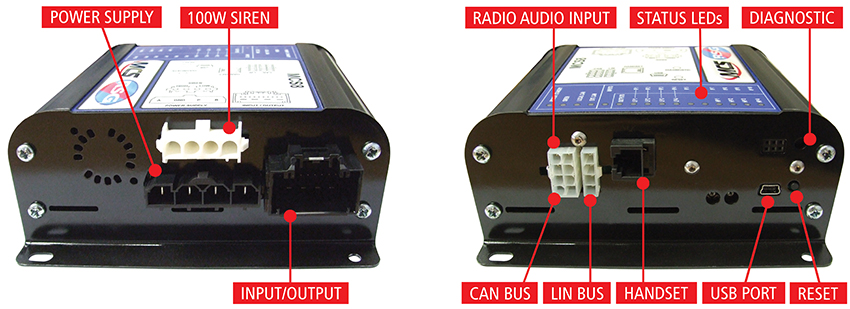

 Global Market
Global Market Sverige
Sverige Deutschland
Deutschland France
France Suomi
Suomi United Kingdom
United Kingdom